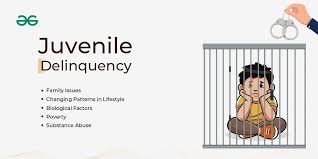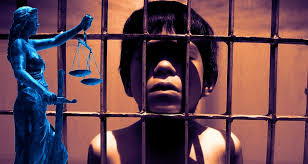Juvenile Laws at Ecuador
Juvenile Laws in Ecuador are centered around rehabilitation, social reintegration, and the protection of children’s rights, in alignment with national laws and international treaties like the UN Convention on the Rights of the Child (CRC). Ecuador has a specialized juvenile justice system that operates separately from the adult criminal justice system, focusing on education, restorative justice, and social support.
Here’s a comprehensive overview of juvenile justice in Ecuador:
1. Age of Criminal Responsibility
Minimum Age of Criminal Responsibility: In Ecuador, the minimum age of criminal responsibility is 12 years old. Children under 12 cannot be prosecuted or held criminally responsible, regardless of the offense.
Ages 12–17: Minors aged 12 to 17 years can be held responsible under a special juvenile justice system, which emphasizes reeducation and reintegration, not punishment.
2. Legal Framework for Juvenile Justice
Ecuador’s juvenile justice system is based on laws that reflect the best interest of the child and ensure due process and protection.
📜 Key Legal Instruments:
Código de la Niñez y Adolescencia (Child and Adolescent Code) – This is the primary law governing the rights, protections, and judicial procedures for minors in Ecuador. It defines the framework for juvenile justice and outlines socio-educational measures rather than punitive sentences.
Constitution of Ecuador (2008) – Establishes the rights of children and adolescents as a priority and mandates a special system for juvenile offenders.
International Treaties – Ecuador is a signatory to the UN Convention on the Rights of the Child (CRC) and the Beijing Rules (UN Standard Minimum Rules for the Administration of Juvenile Justice), which shape its juvenile justice policy.
3. Juvenile Justice System: Procedures and Courts
Specialized Juvenile Courts (Juzgados de la Niñez y Adolescencia): These courts handle cases involving minors in conflict with the law. Judges are trained in child rights and juvenile justice principles.
Privacy and Protection: Hearings are confidential, and minors’ identities are protected to avoid stigmatization. Proceedings are designed to be child-friendly and non-intimidating.
Legal Representation: Juveniles have the right to legal counsel, and the state provides public defenders specialized in juvenile cases if necessary.
Support Professionals: Social workers, psychologists, and educators are often involved in both the court process and the rehabilitation of minors.
4. Sentencing: Socio-Educational Measures
Juvenile sentencing in Ecuador is called "medidas socioeducativas" (socio-educational measures), which are non-punitive and aimed at rehabilitation.
✅ Types of Measures:
| Measure | Age Group | Duration / Nature |
|---|---|---|
| Admonition | 12–17 | Formal warning from the judge |
| Imposition of Rules | 12–17 | Curfew, school attendance, therapy, etc. |
| Community Service | 12–17 | Must not interfere with schooling |
| Assisted Liberty (Probation) | 12–17 | Supervised freedom with periodic check-ins |
| Semi-open Regime | 12–17 | Reside at home, attend a rehabilitation center daily |
| Institutional Internment | 12–17 | For serious offenses, in a juvenile facility |
Internment (detention) is used only for serious crimes and is never longer than 8 years (even for grave offenses like homicide).
Juvenile detention centers are separate from adult prisons, and the focus remains on education and psychological support.
5. Rehabilitation and Social Reintegration
Ecuador places strong emphasis on educational and psychological programs for minors in conflict with the law.
Education: Minors must continue their education while in the juvenile justice system, including while detained.
Vocational Training: Programs often include job training, art, and sports to help reintegrate minors into society.
Psychosocial Support: Therapists and social workers help address trauma, addiction, or family issues.
Family Reintegration: Efforts are made to repair family ties and reintegrate the minor into a safe and supportive environment.
6. Alternatives to Judicial Process
Mediation and Restorative Justice: For minor offenses, cases may be diverted into mediation or reconciliation programs, avoiding formal judicial proceedings.
Diversion Programs: Programs may include counseling, family therapy, or supervised activities to prevent recidivism.
7. Detention Facilities for Juveniles
Juvenile detention is only applied as a last resort, and facilities are focused on rehabilitation.
Units are separate by age and gender.
They are managed by the Ministry of Justice in coordination with the Council of the Judiciary and child welfare agencies.
8. International Commitments
Ecuador is a committed member of several international frameworks protecting children’s rights:
UN Convention on the Rights of the Child (CRC)
Beijing Rules (UN guidelines for juvenile justice)
Havana Rules (regarding conditions in juvenile detention)
Riyadh Guidelines (prevention of juvenile delinquency)
✅ Summary: Juvenile Justice in Ecuador
| Aspect | Details |
|---|---|
| Age of Criminal Responsibility | 12 years |
| Governing Law | Child and Adolescent Code (Código de la Niñez y Adolescencia) |
| Court System | Specialized juvenile courts |
| Sentencing Measures | Socio-educational (admonition, probation, community service, internment) |
| Maximum Detention Duration | 8 years (for serious crimes only) |
| Focus | Rehabilitation, reintegration, education, family support |
| Legal Protections | Confidential hearings, right to defense, support professionals involved |
| Alternatives to Detention | Mediation, restorative justice, family counseling |
| International Commitments | CRC, Beijing Rules, Havana Rules, Riyadh Guidelines |





0 comments